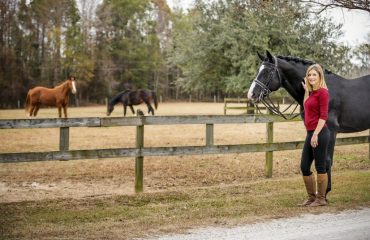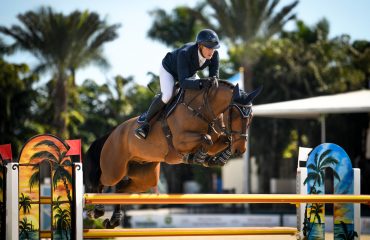By Armand Leone, Jr.
The upcoming Olympic Games in Tokyo will be the first time since 1968 that show jumping teams will compete in a Nations Cup format with three horse/athlete combinations per nation and no drop score. The decision to move away from a format of four horse/athlete combinations per nation, which in turn removes the ability to drop the lowest score, was voted in by the FEI General Assembly in 2016 following the Olympic Games in Rio de Janerio, Brazil, and subsequently by the International Olympic Committee (IOC) Executive Board in 2017.
A three-person team with no drop score was designed in part to increase the number of participating nations at the Olympic Games and to make scoring easier to understand. It also maintains suspense through to the final rider of the final round. The format is confusing for a general audience when, once the first three riders have clinched the lead, the fourth and last team rider does not start. With the three-person format, the score of the last rider always matters.
Some criticize the three-person format, believing it puts more pressure on the riders. Another concern is that a team with only three riders can be eliminated if one rider falls off a horse for any reason. Since the Olympic Games only come once every four years, and countries have so much at stake in these competitions, I think we need to find a balance — a way to offer fairness to all the parties that have worked so hard to get to this point. One slip around a turn or a chip and bobble at a vertical causing a dismount should not end a team’s chance to place. In this type of situation, a team member’s elimination, and thus the team’s elimination, seems inappropriate.
If we’re going to change to a three-person format for the Olympic Nations Cup competition, I think it’s time to return to the original FEI rules that penalized the first fall in a competition with eight faults and time, with elimination coming only upon a second fall. Under this rule, a rider can remount and continue the course after one fall. In the past, the rider made the decision on the field of play to remount or not.
Armand fell off in the 1982 Nations Cup in Lucerne, Switzerland, while on a three-person team with his brothers, Peter and Mark, when his horse, Loecky, tripped upon landing at the water and fell. Armand was able to remount and complete the course, although current rules do not allow remounting.
Photos by Findlay Davidson
Given the improved safety standards in the sport today, if a rider falls, the horse and rider can immediately be assessed. In the absence of concussion or injury to the rider, and absent signs of unsoundness in the horse, if the rider chooses to remount, the rider receives eight faults, a fixed time penalty, and continues. Assessing a fixed time penalty after a fall would allow proper assessment of the rider and horse before remounting and continuing the course.
I have personally competed in Nations Cup events after falling and remounting on a three-person team. In the 1982 Nations Cup in Lucerne, Switzerland, I competed on a three-person team for the U.S. with my brothers, Peter and Mark. I was the third and last rider for our team in the first round, and we were tied for the lead. My horse tripped upon landing at the water and fell. I remounted, completed the course, and scored 18 faults (eight faults for the fall, eight faults for two rails down while hurrying to complete the course, and two time faults). Our team was in last place after the first round. We came back in the second round scoring a total of two faults and ended up as the sixth-place team. Perseverance pays.
The new three-person format may also modify how teams are selected because consistency and the ability to get out of trouble matters more when withdrawing is not an option. Bert De Nemethy used to say he selected his riders for the Nations Cup teams based on how they perform on their worst day, not their best day. The three-person format is not for the faint of heart. The commitment to finish is as important as the need to jump clean.
Countries prepare for the Olympic Games over a four-year period. The stakes are high for all. With the understanding that a quick safety check after a fall should be performed on the field of play before proceeding, reinstating the eight-fault and time penalty for the first fall makes sense with the three-person Olympic Team Nations Cup format. In the end, falling off and getting back on is largely what horsemanship is all about.















